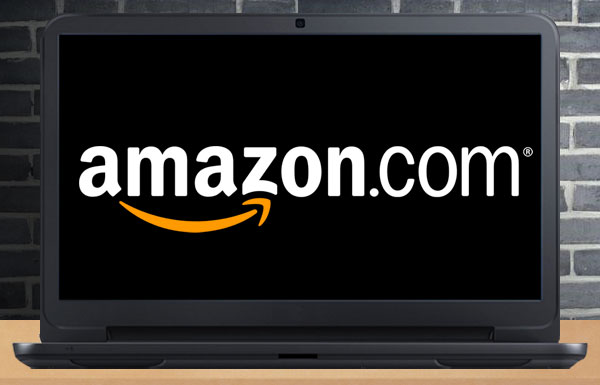Amazon’s significant expansion into yet another market — this time, grocery stores — dominated many of my conversations last week. Clearly, Amazon warned us. I’ve been here before — you see, back in the 1990s, when Amazon was just books, I was running the company’s e-commerce unit. I got into an argument with one of the analysts focused on Amazon, who believed the company wouldn’t go beyond books. I argued that the model it was using could — and would — expand to other things, but even I wasn’t thinking broadly enough.
Since then, Amazon has entered not only most areas of retail, from appliances to groceries, but also the enterprise technology arena, with Amazon Web Services. It clearly is going to move into delivery, and likely will displace UPS and FedEx in a few years — but what about an Amazon car or an Amazon hotel? We could be headed toward the United States of Amazon.
I’ll close with my product of the week: an interesting new video conferencing system that could redefine how we interact remotely.
The Power of Amazon
Amazon’s recurring model — what makes it uniquely different — is that it focuses on connecting buyers to products with minimum friction, at huge scale and minimal margins. It has been virtually impossible to compete with this combination over time, because it seems to result not only in a competitive price, but also in an unmatched customer experience, in terms of convenience. Some things arrive on the same day — and in some places, you can measure the time between order and delivery in hours.
Once you understand Amazon’s model, you suddenly realize it could be applied not only to selling products, but also to providing services. Amazon Web Services, for example, isn’t a physical product — it is a set of technologies you largely rent off the Web.
The Delivery Business
I don’t think either UPS or FedEx gets the full risk Amazon poses. At some point, Amazon’s delivery capability, due to its own expansions, will drop in line with what those companies can do. When that happens — at least for Amazon — UPS and FedEx largely will become redundant.
Once Amazon effectively reduces costs through economies of scale, it is likely to move from using delivery services to supplying them. This suggests not only that you will be getting products you buy on Amazon from Amazon’s own delivery service — and, increasingly, by drone — but also that when you want to send something, you’ll likely place it in your yard and have an Amazon drone pick it up.
While Amazon still may have to roll a truck to deliver an appliance (because you’re going to want someone to install it for you), even groceries should be coming in on a drone-delivered package. Autonomous delivery vehicles — coupled with robots that can drive into Amazon depots, load up, and then deliver to homes — are a natural for the company, which has been deploying robots aggressively in its warehouses and depots for some time.
Amazon Cars
Once Amazon is delivering products, the step up to delivering people is pretty small. Whether we are talking about autonomous cars or people-carrying drones dropping off and picking up people, Amazon’s move from packages to people likely will be measured in months.
In fact, the same vehicles likely could perform both roles in many cases, allowing Amazon not only to underprice Lyft and Uber, but also to provide entertainment and shopping experiences in the autonomous vehicle more cost-effectively.
If you don’t mind shopping while in transit, I imagine that you likely could get a reduced rate — and, as always, Prime customers will get a standard discount.
Air Travel
Short-distance travel is just for starters. Amazon already has a fleet of planes delivering packages — and at scale, it likely will be able to dictate what companies like Boeing build. This means Amazon not only could specify roomier planes, but also could shift from package-carrying to people-carrying, like the 747s were designed to do.
It could tie its vehicles to the airports and decouple baggage, so you could have your baggage flow directly to your hotel. Amazon could route you directly to the plane with its cars largely bypassing airport security, by implementing a passenger-vetting process like Clear, TCA Pre or Global Entry.
Once again, while in transit, Amazon can use the opportunity to sell you things, reducing your fare further than a current carrier could match — and, once again, Prime members would get a discount. At some future point, you’ll not only be taken to the plane by an Amazon car, but also be picked up as well.
Amazon Hotels
That brings us to hotels. Granted, I expect that Amazon initially will partner with other companies, but once it is taking hundreds of thousands of people to vacation destinations, it wouldn’t be hard to justify buying a resort or cruise line.
Amazon then would have control over your entire vacation. It could upsell you on rooms and amenities — and, as before, justify lower prices by providing a shopping experience while you’re on vacation, and how many of us do a lot of shopping when we are on vacation anyway? This actually gets kind of scary, because how many of the shopping experiences in that future world could be at real or virtual Amazon stores?
Smartphones, TVs, Personal Computers…
One of the things Amazon failed at was smartphones. The market took a look at Amazon’s Fire Phone and laughed. The problem was that Amazon didn’t own enough of the ecosystem at that time.
However, Amazon Web Services clearly could expand into network delivery, and were Amazon to merge or even partner with a major carrier, that would give it the leverage it would need to drive an Amazon phone once again.
The second time around, it could deliver something not only more attractively priced, but also tied back to a wealth of Amazon services that would encompass either Apple’s or Google’s offerings — or, using its own developer relationships, eventually match them.
Wrapping Up: United States of Amazon
I’m clearly leaving off a number of industries, like food services, but it’s possible to see Amazon moving into those markets as well — particularly as fast food restaurants move to full automation. So, my limitations are based more on space than any belief that there is a business that Amazon might not eventually take over.
Take farming, for instance. Now that they Amazon is into groceries, locking up supply — if only by taking over logistics — would seem to be a natural progression for the firm. It may not buy up the firms, but it could disrupt that industry dramatically anyway.
In the end, I think we are looking at a level of control and coverage that eventually would make Amazon’s power hard to differentiate from the government’s power. When that happens, we will effectively become the United States of Amazon. That is a scary idea — but given what has been happening in our own government, somewhat less scary than what we now have. That’s something to noodle about this week.
I’ve been covering video conferencing since the 1980s. We’ve had hills and valleys — going from wild excitement and the belief we no longer will have to travel to meetings, to market collapse and dropping back to a handful of vendors that bravely continue to provide products.
One of the big constant problems is that the critical need for these things is to make remote employees feel they aren’t forgotten and can participate on a near equal footing with the folks who are in the room. Most conferencing systems are placed so that the remote attendee feels isolated and unable to engage.
What the Meeting Owl does is address that one critical problem. You place it in the middle of the table, which allows the remote worker to face people during interactions. Even though it’s still necessary to look at a monitor, the remote employee — if the system is set up right — has more of an eye-to-eye interaction, leading to what should be a deeper collaboration.

As different people speak, the camera in the device automatically scans to the person speaking, giving the remote worker the feeling of good facetime. You can tie this into presentation tools and use it for more typical conference room streaming, but the Meeting Owl clearly is best for meetings where the need to interact and collaborate verbally is very high.
The Meeting Owl is a unique — and I think very innovative — approach to collaboration-focused video conferencing, and that makes it an ideal product of the week. Oh, and it is kind of cute too!

























































This model eliminates so many jobs, just who will be their customers? Jobs are disappearing worldwide. No money means no purchases.